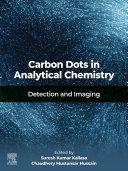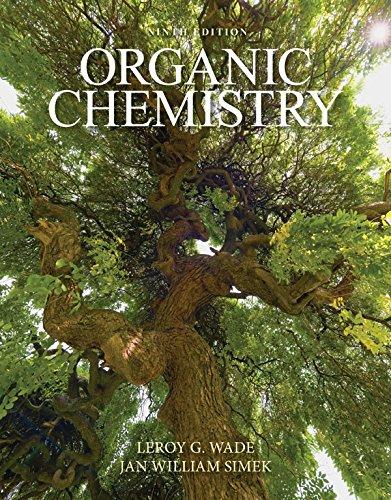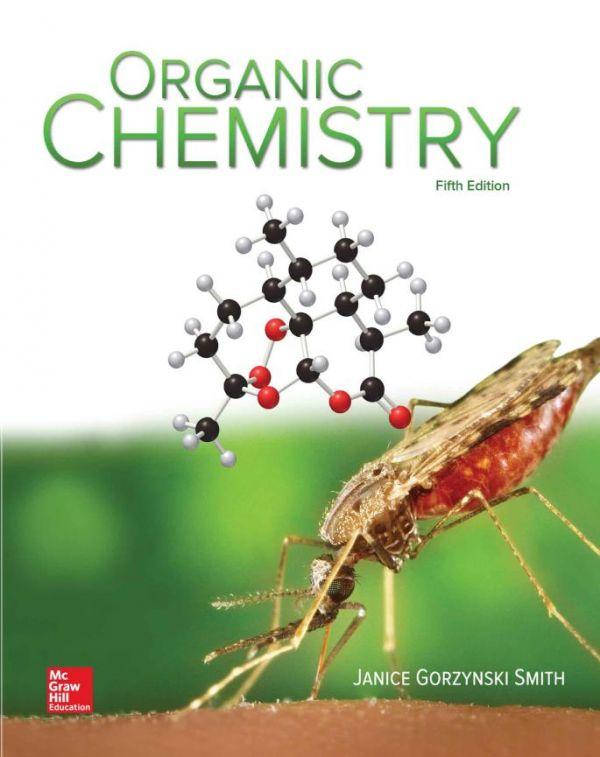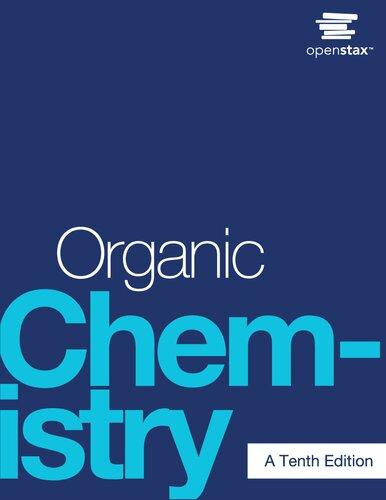CarbonMonoxideinOrganicSynthesis
CarbonylationChemistry
Editedby BartoloGabriele
Editor
Prof.BartoloGabriele UniversityofCalabria DepartmentofChemistry&Chemical Technologies
ViaPietroBucci12/C 87036ArcavacatadiRende(CS) Italy
CoverImage: ©azatvaleev/GettyImages
Allbookspublishedby WILEY-VCH arecarefully produced.Nevertheless,authors,editors,and publisherdonotwarranttheinformationcontained inthesebooks,includingthisbook,tobefreeof errors.Readersareadvisedtokeepinmindthat statements,data,illustrations,proceduraldetailsor otheritemsmayinadvertentlybeinaccurate.
LibraryofCongressCardNo.: appliedfor
BritishLibraryCataloguing-in-PublicationData Acataloguerecordforthisbookisavailablefromthe BritishLibrary.
BibliographicinformationpublishedbytheDeutsche Nationalbibliothek
TheDeutscheNationalbibliothekliststhis publicationintheDeutscheNationalbibliografie; detailedbibliographicdataareavailableonthe Internetat <http://dnb.d-nb.de>.
©2022WILEY-VCHGmbH,Boschstr.12,69469 Weinheim,Germany
Allrightsreserved(includingthoseoftranslation intootherlanguages).Nopartofthisbookmaybe reproducedinanyform–byphotoprinting, microfilm,oranyothermeans–nortransmittedor translatedintoamachinelanguagewithoutwritten permissionfromthepublishers.Registerednames, trademarks,etc.usedinthisbook,evenwhennot specificallymarkedassuch,arenottobeconsidered unprotectedbylaw.
PrintISBN: 978-3-527-34795-7
ePDFISBN: 978-3-527-82933-0
ePubISBN: 978-3-527-82934-7
oBookISBN: 978-3-527-82935-4
Typesetting Straive,Chennai,India
Printedonacid-freepaper
10987654321
Thisbookisdedicatedtothememoryofmybelovedparents,GiuseppeGabrieleand AnnaLaValle.
Contents
Preface xiii
1Introduction:CarbonMonoxideasSynthoninOrganic Synthesis 1 BartoloGabriele References 7
PartICarbonylationsPromotedbyFirstRowTransition MetalCatalysts 13
2Cobalt-CatalyzedCarbonylations 15
JérômeVolkmanandPhilippeKalck
2.1Introduction 15
2.2CarbonMonoxideandItsSurrogates 16
2.3HydroformylationofAlkenes 18
2.4CarbonylationofAlkynesbythePauson–Khand[2+2+1]Reaction 23
2.5CarbonylationofMethanol 28
2.6CarbonylationofHeterocycles 30
2.7CarbonylationofAlkylandArylHalides 36
2.8C—HBondCarbonylations 37
2.9MiscellaneousCo-CatalyzedCarbonylations 39
2.10SummaryandConclusions 40 References 41
3Nickel-CatalyzedCarbonylations 51 DebaratiDasandBhalchandraM.Bhanage
3.1Introduction 51
3.2NickelHalidesinCarbonylationReaction 52
3.3Ni-ChelatesasPrecatalysts 56
3.4NanoparticlesasActiveCatalysts 60
3.5DinickelComplexesasCatalysts 62
3.6Ni/ACasaPromisingHeterogeneousCatalyst 63
3.7UseofCOSurrogateswithNickelCatalysts 64
3.7.1MetalCarbonylsasCOSurrogates 64
3.7.2FormatesasCOSurrogates 67
3.7.3AcidorAcidChloridesasCOSurrogates 69
3.8OtherProminentRolesofNickelinCarbonylation 73
3.9ConclusionandFutureOutlook 77 References 78
4CarbonylationsCatalyzedbyOtherFirstRowTransition-Metal Catalysts(Manganese,Iron,Copper) 83 Chong-LiangLi,HaiWang,andXiao-FengWu
4.1Introduction 83
4.2SynthesisofKetones 83
4.3SynthesisofEsters 90
4.4SynthesisofAmides 95
4.5SynthesisofOtherProducts 104
4.6SummaryandConclusions 110 References 110
PartIICarbonylationsPromotedbySecondRowTransition MetalCatalysts 113
5Ruthenium-CatalyzedCarbonylations 115 HelfriedNeumannandRajenahallyV.Jagadeesh
5.1Introduction 115
5.2CHActivationofNitrogen-ContainingAreneDerivatives 116
5.3Ruthenium-CatalyzedCarbonylationsofOlefinsandNitroarenes 123
5.3.1Ruthenium-CatalyzedHydroformylations 123
5.3.2Ruthenium-CatalyzedAlkoxycarbonylationofOlefins 126
5.3.3CarbonylationofNitroarenes 129
5.4Ruthenium-CatalyzedCarbonylationofAminesandAlcohols 132
5.5Ruthenium-CatalyzedCyclocarbonylations 133
5.6Ruthenium-CatalyzedReactionsUsingSyngas 138
5.6.1Fischer–TropschSynthesis 138
5.6.2SynthesisofOxoProductsfromSyngas 140
5.7SynthesisofOxoProductsfromH2 andCO2 142
5.8Conclusions 144 References 144
6Rhodium-CatalyzedCarbonylations 149 OrestePiccoloandStefanoPaganelli
6.1Introduction 149
6.2Hydroformylation 151
6.2.1CatalystRecovery 152
6.2.2AqueousBiphaseHydroformylation 156
6.2.3EnantioselectiveHydroformylation 161
6.2.4TandemHydroformylation 164
6.2.5SyngasSurrogates 169
6.3Carbonylation 171
6.4SomeRelevantPatentsandPatentApplications(2015–2020) 184
6.4.1Hydroformylation 184
6.4.2PreparationofAceticAcidandSimilarCompoundsand Derivatives 185
6.4.3Alcohols 185
6.5SummaryandConclusions 185 References 186
7Palladium(0)-CatalyzedCarbonylations 197 JianmingLiu,ChengtaoYue,andFuweiLi
7.1Introduction 197
7.2Palladium(0)-CatalyzedCarbonylativeSynthesisofEster Derivatives 198
7.2.1Palladium(0)-CatalyzedCarbonylativeSynthesisofEsterDerivatives fromArylHalides 198
7.2.2Palladium(0)-CatalyzedCarbonylativeSynthesisofEsterDerivatives fromAlkynes 201
7.2.3Palladium(0)-CatalyzedCarbonylativeSynthesisofEsterDerivatives UsingBenzylAmines 208
7.3Palladium(0)-CatalyzedCarbonylativeSynthesisofAmide Derivatives 209
7.3.1Palladium(0)-CatalyzedCarbonylativeSynthesisof β-Lactams 209
7.3.2Palladium(0)-CatalyzedCarbonylativeSynthesisofFive,Six, Seven-MemberedCyclicAmides 211
7.3.3Palladium(0)-CatalyzedCarbonylativeSynthesisofBenzamide Derivatives 214
7.4Palladium(0)-CatalyzedCarbonylativeSynthesisofKetone Derivatives 217
7.4.1Palladium(0)-CatalyzedCarbonylativeSynthesisofKetoneDerivatives fromArylHalides 217
7.4.2Palladium(0)-CatalyzedCarbonylativeSynthesisofKetoneDerivatives fromOtherSubstrates 223
7.5Palladium(0)-CatalyzedCarbonylativeSynthesisof α,β-AlkynylKetones Derivatives 223
7.6Palladium(0)-CatalyzedCarbonylativeSynthesisofOtherCarbonyl Compounds 225
7.7SummaryandConclusions 232 References 232
8Palladium(II)-CatalyzedCarbonylations 235 BartoloGabriele,NicolaDellaCa’,RaffaellaMancuso,LuciaVeltri, andIdaZiccarelli
8.1Introduction 235
8.2Palladium(II)-CatalyzedCarbonylationofAlkanesandSaturatedC—H Bonds 236
8.3Palladium(II)-CatalyzedCarbonylationofArenesand Heteroarenes 239
8.4Palladium(II)-CatalyzedCarbonylationofAlkenes 243
8.4.1Palladium(II)-CatalyzedCarbonylationofUnfunctionalizedAlkenes, Dienes,andAllenes 243
8.4.2Palladium(II)-CatalyzedCarbonylationofFunctionalizedAlkenesand Allenes 250
8.5Palladium(II)-CatalyzedCarbonylationofAlkynes 255
8.5.1Palladium(II)-CatalyzedCarbonylationofUnfunctionalized Alkynes 255
8.5.2Palladium(II)-CatalyzedCarbonylationofFunctionalizedAlkynes 264
8.6Palladium(II)-CatalyzedCarbonylationofOtherSubstrates 274
8.7SummaryandConclusions 277 References 278
9CarbonylationsCatalyzedbyOtherSecond-RowTransition MetalCatalysts 295 FrancescaFoschiandGianluigiBroggini
9.1Introduction 295
9.2ZirconiumCompoundsasCarbonylationCatalysts 295
9.2.1CarbonylationwithCarbonMonoxideonSulfated-DopedZirconiaasthe SolidAcidCatalyst 295
9.2.2CarbonylationofZirconoceneComplexes 299
9.3SilverCompoundsinCarbonylationReactions 307
9.3.1Koch-TypeReactionsinthePresenceofSilverCarbonylIon Catalyst 307
9.3.2Koch-TypeReactionsinthePresenceofSilverLewisAcidsunderCO Atmosphere 309
9.3.3CarbonylativeCouplingReactionsPromotedbyMetal–SilverBimetallic Catalysts 309
9.4MolybdenumCompoundsinCarbonylationReactions 312
9.4.1FormalCarbonylationProcesses:CarbonylationofEthyleneand Methanol 312
9.4.2MolybdenumCarbonylComplexesasCatalystsandCOSourcein IntermolecularCarbonylationCouplingReactionsofArylorAlkenyl Halides 314
9.4.3MolybdenumCarbonylComplexesasBothCatalystsandCOSourcein IntramolecularCarbonylationCouplingReactions 317
9.4.4Metal-CatalyzedCouplingProceduresUsingMolybdenumastheCO Source 319
9.4.4.1IntermolecularCross-CouplingProcedures 320
9.4.4.2CascadeandIntramolecularCross-CouplingProcedures 323
9.4.4.3CarbonylativeCross-CouplinginthePresenceofTransmetalation Partners 326
9.5SummaryandConclusions 327 References 328
PartIIIMiscellaneousCarbonylationReactions 333
10CarbonylationsPromotedbyThird-RowTransitionMetal Catalysts 335 AnthonyHaynes
10.1Introduction 335
10.2MethanolCarbonylation 336
10.2.1AceticAcidProduction 336
10.2.2ProcessConsiderationsandMechanismforRhCatalyst 337
10.2.3IridiumCatalysts 339
10.2.3.1MechanismforIridiumCatalyst 339
10.2.3.2RoleofPromotersinIridium-CatalyzedMethanolCarbonylation 342
10.2.3.3RecentDevelopments 344
10.3Hydroformylation 345
10.3.1IridiumCatalysts 346
10.3.2PlatinumCatalysts 349
10.3.3OsmiumCatalysts 351
10.4OtherCarbonylationReactions 351
10.4.1AlkoxycarbonylationofAlkenes 352
10.4.2CarbonylationReactionsInvolvingAlkynes 353
10.4.3OxidativeCarbonylations 354
10.5SummaryandConclusions 355 References 356
11TransitionMetal-FreeCarbonylationProcesses 363 LuCheng,BinbinLiu,FangningXu,andWeiHan
11.1Introduction 363
11.2Transition-Metal-FreeCarbonylationfortheSynthesisofAldehydesand Ketones 364
11.3Transition-Metal-FreeCarbonylationfortheSynthesisofEstersand Lactones 375
11.4Transition-Metal-FreeCarbonylationfortheSynthesisofAmides 385
11.5Transition-Metal-FreeCarbonylationfortheSynthesisofAcidsand Anhydrides 386
xii Contents
11.6Transition-Metal-FreeCarbonylationfortheSynthesisofAcylChlorides andAlcohols 388
11.7SummaryandConclusions 392 References 393
12ConclusionsandPerspectives 397 BartoloGabriele Index 401
Preface
ThisbookisdedicatedtotheuseofcarbonmonoxideasaC-1buildingblockin organicsynthesis.Theincorporationofcarbonmonoxideintoanorganicsubstrate togiveacarbonylcompoundiscalled“carbonylation.”Carbonylationreactions, discoveredin1930sthankstothepioneeringworkbyRoelenandReppe,arenow establishedasamostpowerfulmethodologyforthedirectsynthesisofcarbonyl derivativesusingthesimplestandreadilyavailableC-1unit.Impressiveprogress hasbeenmadeinthisfieldatbothindustrialandacademiclevels,sonowadays carbonylationsarewidelyappliednotonlyfortheproductionofindustriallyrelevant,relativelysimplecarbonylcompoundsbutalsoforthepreparationofcomplex moleculararchitecturesandevenaskeystepsinnaturalproductsynthesis.
Ihavebeeninvolvedinthisfascinatingareaofresearchformanyyears,with particularinterestinpalladium-catalyzedprocesses.Aftermydegreeinchemistry attheUniversityofCalabriawithathesisonPd(II)-catalyzedalkynecarbonylation (1990),in1991,IjoinedthegroupofProfessorsGianPaoloChiusoliandMircoCosta attheUniversityofParmaforaresearchstage.Atthattime,theuseofCOasC-1 unitinsynthesiswasamongtheprimaryresearchinterestsofProfessorsChiusoli andCosta,andIwasveryhappytobeinvolvedinthisemergingresearcharea.Since then,IcontinuedtoworkinthisfieldduringmyPhD(attheUniversityofCalabria, withProfessorGiuseppeSalerno)andtheninthecoursemyindependentcareer.
Therefore,attheend2019,whenDr.AnneBrennführerinvitedmetosubmit abookproposaloncarbonylationchemistryforWiley-VCH,Iwasveryhappyto accept.Iwasawarethatotherimportantandexcellentbookshadbeenpublished before(themostrecentonein2014).However,Iwasconvincedthatanewupdated bookinthisfield,organizedinadifferentwaywithrespecttothosealready published,couldbeusefultothescientificcommunity.Infact,anewbookcould beofinterestnotonlyforthoseresearchersdirectlyinvolvedincarbonylation chemistry(frombothacademiaandindustry)butalsoforresearchers,postdocs, andPhDstudentsinterestedinthemostrecenttrendsinorganicsynthesis.
Mostcarbonylationprocessesarecatalyzedbytransitionmetalspecies.Different fromthepreviousbooksoncarbonylations,whichwereorganizedonthebasisof theprocesstypeorthenatureofthecarbonylatedproductobtained,thisbookhas beenstructuredaccordingtothemetalpromotingthecarbonylationprocess.The aimofthiskindofclassificationwastohelpthereadertobetterfocusonthecatalytic
xiv Preface abilitiesandspecificitiesofdifferentmetalcatalystsinpromotingvariouskindsof carbonylations.However,consideringtheincreasingimportanceofmetal-freecarbonylationreactions(radicalcarbonylations,inparticular),afinalchapterhasbeen alsodevotedtothisemergingareaofresearch.
Thebookcontributorsareleadingscientistsinthefield,whohavekindlyaccepted myinvitationtospendsomeoftheirtimefortherealizationofthisexcitingproject, andIextendmywarmestthankstothem.Ialsowouldliketothankverymuchthe Wiley-VCHeditors,inparticularDr.AnneBrennführerandMs.KatherineWong,for thekindinvitationtoeditthisbookandfortheirinvaluablecooperationandsupport throughouttheentirepreparationofthebook.
IhopeyouwillenjoyreadingthebookatleastasmuchasIhaveenjoyedin editingit!
ArcavacatadiRende(CS)
January18,2021 BartoloGabriele
Introduction:CarbonMonoxideasSynthoninOrganic Synthesis
BartoloGabriele
UniversityofCalabria,LaboratoryofIndustrialandSyntheticOrganicChemistry(LISOC),Departmentof ChemistryandChemicalTechnologies,ViaPietroBucci12/C,87036ArcavacatadiRende,Italy
Thisbookdiscussesthesynthesisofcarbonylatedcompoundsbyintroducingthe carbonylfunctionintoanorganicsubstrate(carbonylation)employingthesimplest C-1unitascarbonylatingagent,carbonmonoxide.Carbonmonoxideisalargely availablefeedstock.Itisproducedindustriallybypartialoxidationofpetroleum hydrocarbonsandsteamreformingoflighthydrocarbons(includingnaturalgas)or gasificationofcoaltogivesyngas(COandH2 )[1].Inthefuture,itisexpectedthat agrowingamountofcarbonmonoxidewillbeavailablefromrenewablefeedstocks, suchasbiowastesandCO2 [2].COisalsothesimplestunitthat,uponinsertion intoanorganicsubstrate,canbedirectlytransformed,withoutatomloss,intoa carbonylgroup.Itisthereforeadesirableandusefulbuildingblockinsynthesisto producehighvalue-addedindustriallyrelevantmoleculesandfinechemicals.
Carbonylationreactionsweredisclosedinthe1930sbytheseminalworks ofRoelen[3]andReppe[4](whoalsocoinedtheterm“carbonylation”)for industrialapplications.Sincethen,thescientificprogressinthisfieldhasbeen enormous,thanks,inparticular,tothedevelopmentofmoreandmoreselective andefficientcatalysts.Thesecatalystsareabletopromoteaplethoraofcarbonylationsundermildconditions,whichcanbeappliedtoalargevarietyof organicsubstrates.Accordingly,carbonylationswithCOhavebecomeincreasinglymoreandmoreimportant,attheindustrialandacademiclevel,astestified bytheconsiderablenumberofbooks[5–12]andreviews[13–115]dedicated tothistopicandbytheincreasingnumberofindustrialpatentsandscientific publications.
Assaidabove,the incorporationofcarbonmonoxideintoanorganicsubstrate to giveacarbonylcompoundiscalled carbonylation.Interestingly,duringthelastyears, considerableefforthasbeenmadebythescientificcommunitytouseCOsurrogates asindirectcarbonylatingagentsoras insitu sourcesofCO(bothinindustryandin academia,toavoidthedirecthandlingofgaseousandtoxicCO).Inthisbook,severalrepresentativeexamplesofCOsurrogateswillalsobepresentedanddiscussed. AlthoughCOsurrogatescanbeinterestingfromapracticalpointofview,itshould
CarbonMonoxideinOrganicSynthesis:CarbonylationChemistry, FirstEdition.EditedbyBartoloGabriele. ©2022WILEY-VCHGmbH.Published2022byWILEY-VCHGmbH.
1Introduction:CarbonMonoxideasSynthoninOrganicSynthesis stillbeconsideredthatcarbonmonoxideischeaperthanitssurrogatesandthatcarbonylationswithCOoccurwithahigheratomeconomy.
Carbonmonoxidepossessesthestrongestbondcurrentlyknown(257.3kcal/mol) [116].Thisbondisonlyweaklypolarizedinthedirectionofcarbon(theexperimentaldipolemomentis0.122D)[117].Thesecharacteristicsmakecarbonmonoxide arelativelystableandinertmolecule.Consequently,COcanbeattackedbyhighly reactivespecies,suchasfreeradicals,carbocations,andstrongnucleophiles(like alkoxides,amideanions,andorganolithiumreagents)(Scheme1.1).Thesereactions formacylradicals,acylcarbocations,and[NuCO] intermediates(alkoxycarbonyl anions,carbamoylanions,andacylanions).Theyevolvetowardformingthefinal carbonylationproductdependingonthenatureofreactantsandreactionconditions (Scheme1.1).
product(s)
product(s)
product(s)
Scheme1.1 Reactionsofcarbonmonoxidewithfreeradicals,carbocations,orstrong nucleophiles(suchasRO ,R2 N ,RLi).
However,themostcommonwaytoactivateCOincarbonylationreactionsunder relativelymildconditionsismetalcoordination.Infact,uponcoordinationto ametalcenterM,thecarbonatombecomesmoreelectrophilic.Itaccordingly becomessusceptibletoattackevenbyarelativelyweaknucleophile,eitherexternal orcoordinatedtothemetal(Scheme1.2;formalchargesareomittedforclarity). Whenoccurringwithinthecoordinationsphereofthemetal,thisprocessiscalled migratoryinsertion.Inthiscase,themetalalsofavorstheattacktocoordinated COforentropicreasons.Ineithercase(externalattack,Scheme1.2a,ormigratory insertion,Scheme1.2b),thecoordinatedcarbonmonoxideistransformedintoa speciesinwhichthecarbonylgroupisbondedtoM,andwhoseparticularstructure depends,apartfromthemetal,onthenatureofthenucleophile.Thus,ifthe nucleophilicspeciesisacarbongroup(alkyl,alkenyl,oraryl) σ-bondedtothe metalundergoingmigratoryinsertion,anacyl-oraroyl-metalspeciesisformed.On theotherhand,oxygenandnitrogennucleophileswillleadtohydroxycarbonyl-, alkoxycarbonyl-,orcarbamoyl-metalcomplexes,respectively(Scheme1.2). Theseintermediates’fatewilldependonthenatureofthemetalandofthereactantstakingpartinthecarbonylationprocessandonreactionconditions.Inmost cases,thefinalcarbonylatedorganicproductisformedwiththereleaseofthemetal, eitherinitsoriginalorinadifferentoxidationstate.Inthefirstcase,acatalytic cycleisdirectlyattained.Incontrast,inthesecondcase,themetalspeciesmustbe reportedinitsoriginaloxidationstate(usingasuitableredoxagent)toachieveacatalyticprocess.Forexample,anacyl-oraroyl-metalintermediateR(CO)–M[+n]–X
Carbonylated
Carbonylated
Carbonylated
(b)
Carbonylated product(s)
Carbonylated product(s) (Nu = nucleophile; Y = Nu, alkyl, alkenyl, aryl)
Specific examples of M(CO)Nu and M(CO)Y species:
Scheme1.2 Carbonmonoxidecoordinatedtoametalcenterbecomesmoresusceptibleto nucleophilicattack,eitherintermolecularly(a)orintramolecularly(migratoryinsertion)(b).
(X = halideorotherligands,withMintheoxidationstate[+n])mayundergoa nucleophilicattackbyanucleophileNuH(likewater,alcohol,oranamine),with theformationofthecarbonylatedproductR(CO)Nu(suchasacarboxylicacid,an ester,oranamide),HX,andthereducedmetalM[+(n 2)](reductivedisplacement ornucleophilicdisplacement;Scheme1.3). R O M[+n] X + NuH
Reductive displacement or nucleophilic displacement
HX + M[+(n–2)]
Nu
Scheme1.3 Anacyl-oraroyl-metalintermediate(R = carbongroup)undergoingreductive displacement(alsocallednucleophilicdisplacement).
Ifthemetalinitiatedtheprocessinits[+(n 2)]oxidationstate(forexample,by oxidativeadditionofR–XtothemetalcentertogiveR–M[+n]–XfollowedbyCO migratoryinsertion),acatalyticcycleisdirectlyachieved(Scheme1.4).Ontheother hand,ifthemetalinitiatedtheprocessinits[+n]oxidationstate(forexample,by metalationofR–HbyM[+n]X2 withtheformationofR–M[+n]–X + HX,followed byCOmigratoryinsertion),theuseofasuitableexternaloxidantisnecessaryto reconvertthereducedmetalM[+(n 2)]toM[+n]andrealizeacatalyticprocess
M[+(n–2)]
M[+n] X NuH nucleophilic displacement Oxidative addition –HX –M[+(n–2)] R M[+n] X Migratory insertion
Scheme1.4 Anexampleofcatalyticcarbonylationprocessinwhichthemetalis eliminatedattheendoftheprocessinitsoriginaloxidationstate.
1Introduction:CarbonMonoxideasSynthoninOrganicSynthesis (Scheme1.5).Clearly,fromapracticalandeconomicalpointofview,theoccurrence ofacarbonylativecatalyticcycleishighlydesirable.Inthelastdecades,therehas beenconsiderableattentiontodevelopingmoreandmorerobustandefficientmetal catalysts,alsoheterogeneousand/orwiththepossibilityofbeingeffectivelyrecycled.
Scheme1.5 Anexampleofcatalyticcarbonylationprocessinwhichthemetalisreduced attheendoftheprocessandisreoxidizedtoitsoriginaloxidationstatebytheactionofan externaloxidant.
ThenucleophilicattackofNuHtoanacyl-oraroyl-metalintermediate(either inter-orintramolecular)isacommonandimportantprocessbywhichthefinal carbonylatedcompoundisdeliveredinacarbonylationreaction.Thisprocessis called reductivedisplacement or nucleophilicdisplacement.Theexactmechanism thisstepmaytakeplacedependsonreactionconditions,and,inparticular,ifthe carbonylationprocessisdoneunderacidic,neutral,orbasicconditions.Under acidicandneutralconditions,thenucleophiletendstoattackthecarbonyl(possibly protonated)oftheR(CO)–M[+n]–Xcomplex,withtheformationofatetrahedral intermediate.Thisintermediateundergoes β-HeliminationfromtheH–O–C–MX moietytogiveR(CO)NuandametalhydridespeciesH–M[+n]–X,inequilibrium withM[+(n 2)] + HX(addition–eliminationmechanism,Scheme1.6a).Onthe otherhand,underbasicconditions,NuH(possiblyinitsanionicNu form) preferablyattacksthemetalcenter,withformaleliminationofX andformation
Scheme1.6 Possiblemechanisticpathwaysinthenucleophilicdisplacementstep: (a)nucleophilicattacktothecarbonylfollowedby β-HeliminationfromtheH–O–C–MX unit(addition–eliminationmechanism);(b)nucleophilicattacktothemetalcenterfollowed byreductiveelimination(ligandexchangemechanism);(c)reactionwithanorganometallic reagentR′ M′ followedbyreductiveelimination(transmetalationmechanism).
1Introduction:CarbonMonoxideasSynthoninOrganicSynthesis 5 oftheR(CO)–M[+n]–Nucomplex.ReductiveeliminationthenleadstoR(CO)Nu andM[+(n 2)](ligandexchangemechanism;Scheme1.6b).Thislattercasealso occurswhentheR(CO)–M[+n]–Xspeciesisattackedbyanorganometallicreagent R′ M′ withtheformationofM′ XandR(CO)–M[+n]–R′ thatundergoesreductive eliminationtogiveR(CO)R′ (asoccursintheso-calledcarbonylativecross-coupling reactions)(transmetalationmechanism;Scheme1.6c).
Dependingontheexactstoichiometryoftheprocess,carbonylationscanbe broadlyclassifiedinto direct, substitutive, additive, oxidative,and reductivecarbonylations.In directcarbonylation,carbonmonoxideisformallyinsertedintoanA—B bondofanorganicsubstratetogiveacarbonylatedproductbearingtheA(CO)B functionality(Scheme1.7a).Anexampleisthedirectcatalyticcarbonylationof methanoltoaceticacid(Scheme1.7b),aparticularlyimportantindustrialprocess.
Scheme1.7 Agenericdirectcarbonylationprocess(a)anddirectcarbonylationof methanoltoaceticacid(b).
Ontheotherhand, substitutivecarbonylation correspondstotheformalsubstitutionofacertainfunctionalgroupWofanorganicsubstratewithacarbonylic functionalgroup(CO)Z(Scheme1.8a).AnexampleisgivenbythesubstitutivecarbonylationofanallylalcoholRCH=CHCH2 OHcarriedoutwithCOandanalcohol(R′ OH)togivea β,γ-unsaturatedesterwithwaterascoproduct,asshownin Scheme1.8b.
′ + H2O (a) (b)
+ CO + R′OH
Scheme1.8 Agenericsubstitutivecarbonylationprocess(a)andsubstitutive carbonylationofallylalcoholsto β,γ-unsaturatedesters(b).
Additivecarbonylation isaprocessinwhichcarbonmonoxide,togetherwith anH–Yspecies(Y = hydrogenoranucleophilicgroup),addstoanunsaturated carbon–carbonbond,asexemplifiedinScheme1.9aforthedoublebond.Examples aregivenbythehydroformylationofolefins(inwhichY = H,withtheformal additiontothedoublebondofahydrogenatomononecarbonandtheformyl groupontheotherone,Scheme1.9b)ortheReppealkoxycarbonylationofanolefin withCOandanalcohol(Y = OR′ ,withtheformaladditiontothedoublebondof ahydrogenatomononecarbonandthealkoxycarbonylgroupontheotherone, Scheme1.9c).
1Introduction:CarbonMonoxideasSynthoninOrganicSynthesis
RCH=CHR + CO + Y–H
RCH=CHR + CO + H2
RCH=CHR + CO + R′OH
Scheme1.9 Agenericadditivecarbonylationprocessforanolefin(a),additive carbonylationofanolefinwithH2 (hydroformylation)(b),andadditivecarbonylationofan olefinwithanalcohol(Reppecarbonylation)(c).
Inanoxidativecarbonylationreaction,theprocessoccurswiththeformalsimultaneouseliminationofmolecularhydrogenfromthesubstrate(s)(Scheme1.10a). Althoughafewexamplesareknownintheliteratureinwhichmolecularhydrogen isindeedformedasthereactioncoproduct,inthemajorityofthecases,the process,promotedbyametalcatalystM[+n],occurswithsimultaneousreduction ofthemetalbytwounitsandwiththeconcomitantformationof2molofH+ (Scheme1.10b).Aprocesslikethisisnotcatalyticunlessasuitableexternaloxidant (abletoreconvertthereducedmetalintoitsoriginaloxidationstate,Scheme1.10c) isaddedamongthereactants(Scheme1.10d).AnexampleisthePdI2 -catalyzed oxidativedialkoxycarbonylationofalkynestogivemaleicdiesterscarriedoutwith molecularoxygenastheexternaloxidant,asshowninScheme1.11.
+ CO
Scheme1.10 Agenericoxidativecarbonylationprocess(a)withtheeliminationof molecularhydrogenfromsubstrate(s)SH2 andformationofcarbonylatedproduct(s)S(CO) or(b)withreductionbytwounitsofametalspeciespromotingtheprocessor(d)carried outinthepresenceofanexternaloxidant,abletoreconvertthepromotingmetalinits originaloxidationstate(c).Thecombinationbetweenthestoichiometricprocess(b)with metalreoxidation(c)givesthereaction(d)catalyticinthemetal.
Ontheotherhand, reductivecarbonylation iswhenmolecularhydrogenis formallyinsertedtogetherwithCOintotheorganicreactant(s)(Scheme1.12a).The hydroformylationreactionofolefins,showninScheme1.9b,isthemostimportant exampleinwhichmolecularhydrogenisusedasacoreactant.Amorecomplex exampleisgivenbythereductivecarbonylationofalkynes,inwhichmolecular hydrogenisformallyreleasedfromthewater-shiftreaction(CO + H2 O → CO2 + H2 )
SH2
+ 2CO + 2R′OH + PdI2
Pd(0) + 2HI + (1/2)O2 PdI2 + H2O
+ 2CO + 2R′OH + (1/2)O2 PdI2 cat
+ Pd(0) + 2HI
Scheme1.11 PdI2 -catalyzedoxidativedialkoxycarbonylationofalkynestomaleic diesters.Thecatalyticprocessistheresultofthecombinationbetweenthe dialkoxycarbonylationprocessoccurringwithreductionofPdI2 toPd(0)followedby reoxidationofPd(0)toPdI2 bytheactionoftheexternaloxidant(molecularoxygen).
andreducesonecarbonylunitintoa–CH2 O–moietywithinthefinalunsaturated γ-lactonering(Scheme1.12b). S + CO + H2 H2S(CO)
cat + CO2 (a) (b)
CCH + 3CO + H2O
Scheme1.12 (a)Agenericreductivecarbonylationprocesswithmolecularhydrogenas reducingagentand(b)reductivecarbonylationofalkynestofuran-2(5H )-ones(inwhichH2 isformallyproduced insitu bythewater-shiftreaction,CO + H2 O → CO2 + H2 ).
Themajoremphasisofthebookisbasedontheincreasingimportanceandversatilityoftransitionmetal-catalyzedcarbonylationprocesses.Thebookrepresents thefirstattempttopresentcarbonylationsbasedonthekindofmetalpromoting thecarbonylationprocessratherthanonthecarbonylationprocesstypeorthecarbonylatedproduct’snature.PartIofthebookdealswithcarbonylationspromotedby first-rowtransitionmetalcatalysts(cobalt,nickel,manganese,iron,copper).PartII describescarbonylationspromotedbysecond-rowtransitionmetalcatalysts(ruthenium,rhodium,palladium,othersecond-rowmetals).Carbonylationpromotedby third-rowtransitionmetalcatalystsisdiscussedinPartIII.Chapter11isalsodevoted tometal-freecarbonylationprocesses.
References
1 Reimert,R.,Marschner,F.,Renner,H.-J.,Boll,W.,Supp,E.,Brejc,M.,Liebner, W.,andSchaub,G.(2011).Gasproduction,2.In: Ullmann’sEncyclopedia ofIndustrialChemistry (eds.H.Baltes,W.GöpelandJ.Hesse),423–479. Weinheim,Germany:Wiley-VCH.
2 Karl,J.andPröll,T.(2018). RenewableSustainableEnergyRev. 98:64–78.
3 Roelen,O.(RührchemieAG)(1938).VerfahrenzurHerstellungvonsauerstoffhaltigenVerbindungen.GermanPatent849548,filed20September1938 andissued15September1952.
1Introduction:CarbonMonoxideasSynthoninOrganicSynthesis
4 Reppe,W.(IGFarben)(1939).VerfahrenzurHerstellungvonAcrylsaeureoder ihrenSubstitutionserzeugnissen.GermanPatent855110,filed02August1939 andissued10November1952.
5 Falbe,J.(ed.)(1970). CarbonMonoxideinOrganicSynthesis.Berlin: Springer-Verlag.
6 Falbe,J.(ed.)(1980). NewSyntheseswithCarbonMonoxide.Berlin,Germany: Springer-Verlag.
7 Colquhoun,H.M.,Thompson,D.J.,andTwigg,M.V.(1991). Carbonylation–DirectSynthesisofCarbonylCompounds.NewYork,NY:PlenumPress.
8 Beller,M.(ed.)(2006).Catalyticcarbonylationreactions.In: Topicsin OrganometallicChemistry,vol.18,1–272.Berlin,Germany:Springer.
9 Kollár,L.(ed.)(2008). ModernCarbonylationMethods.Weinheim,Germany: Wiley-VCH.
10 Beller,M.andWu,X.-F.(2013). TransitionMetalCatalyzedCarbonylationReactions–CarbonylativeActivationofC–XBonds.Berlin,Germany:Springer.
11 Tambade,P.,Bhanage,B.,andPatil,Y.(2014). StudiesinCatalyticCarbonylationReactions.Riga,Latvia:LAPLambertAcademicPublishing.
12 Wu,X.-F.andBeller,M.(eds.)(2016).TransitionmetalcatalyzedCarbonylative synthesisofheterocycles.In: TopicsinHeterocyclicChemistry,vol.42,1–166. Berlin:Springer.
13 Ren,Z.,Lyu,Y.,Song,X.,andDing,Y.(2020). Appl.Catal.,A 595:117488.
14 Nogi,K.andYorimitsu,H.(2020). Chem.AsianJ. 15:441–449.
15 Kalck,P.,LeBerre,C.,andSerp,P.(2020). Coord.Chem.Rev. 402,UNSP 213078.
16 Jones,D.J.,Lautens,M.,andMcGlacken,G.P.(2019). Nat.Catal. 2:843–851.
17 Perrone,S.,Troisi,L.,andSalomone,A.(2019). Eur.J.Org.Chem.:4626–4643.
18 Zhao,S.andMankad,N.P.(2019). Catal.Sci.Technol. 9:3603–3613.
19 Mancuso,R.,DellaCa’,N.,Veltri,L.,Ziccarelli,I.,andGabriele,B.(2019). Catalysts 9:610.
20 Peng,J.-B.,Geng,H.-Q.,andWu,X.-F.(2019). Chem 5:526–552.
21 Urban,B.,Papp,M.,andSkoda-Foldes,R.(2019). Curr.GreenChem. 6:78–95.
22 Ma,K.,Martin,B.S.,Yin,X.,andDai,M.J.(2019). Nat.Prod.Rep. 36:174–219.
23 Nielsen,D.U.,Neumann,K.T.,Lindhardt,A.T.,andSkrydstrup,T.(2019). J. LabelledCompd.Radiopharm. 61:949–987.
24 Xu,F.N.andHan,W.(2019). Chin.J.Org.Chem. 38:2519–2533.
25 Taddei,C.andGee,A.D.(2019). J.LabelledCompd.Radiopharm. 61:237–251.
26 Matsubara,H.,Kawamoto,T.,Fukuyama,T.,andRyu,I.(2018). Acc.Chem. Res. 51:2023–2035.
27 Gabriele,B.(2018).Synthesisofheterocyclesbypalladium-catalyzedcarbonylativereactions.In: AdvancesinTransition-MetalMediatedHeterocyclicSynthesis (eds.D.SoléandI.Fernández),55–127.London,UK:AcademicPress/Elsevier.
28 Gabriele,B.(2018). TargetsinHeterocyclicSystems,vol.22(eds.O.A.Attanasi, P.MerinoandD.Spinelli),41–55.Rome,Italy:ItalianChemicalSociety.
29 Peng,J.-B.andWu,X.-F.(2018). Angew.Chem.Int.Ed. 57:1152–1160.
30 Li,Y.,Hu,Y.,andWu,X.-F.(2018). Chem.Soc.Rev. 47:172–194.
31 Albano,G.andAronica,L.A.(2017). Eur.J.Org.Chem.:7204–7221.
32 Piens,N.andD’hooghe,M.(2017). Eur.J.Org.Chem.:5943–5960.
33 Shen,C.andWu,X.-F.(2017). Chem.Eur.J. 23:2973–2978.
34 Pineiro,M.,Dias,L.D.,Damas,L.,Aquino,G.L.B.,Calvete,M.J.F.,andPereira, M.M.(2017). Inorg.Chim.Acta 455:364–377.
35 Peng,J.B.,Qi,X.,andWu,X.-F.(2017). Synlett 28:175–194.
36 Feng,J.-B.andWu,X.-F.(2017). Adv.Heterocycl.Chem. 121:207–246.
37 Zhu,Z.,Zhang,W.,andGao,Z.(2016). Progr.Chem. 28:1626–1633.
38 Song,H.,Kang,M.,Jin,R.,Jin,F.,andChen,J.(2016). Progr.Chem. 28: 1313–1327.
39 Zoeller,J.R.(2016). Org.ProcessRes.Dev. 20:1016–1025.
40 Gehrtz,P.H.,Hirschbeck,V.,Ciszek,B.,andFleischer,I.(2016). Synthesis 48: 1573–1596.
41 Friis,S.D.,Lindhardt,A.T.,andSkrydstrup,T.(2016). Acc.Chem.Res. 49: 594–605.
42 Kalck,P.andUrrutigoity,M.(2015). Inorg.Chim.Acta 431:110–121.
43 Rahman,O.(2015). J.LabelledCompd.Radiopharm. 58:86–98.
44 Cavinato,G.andToniolo,L.(2014). Molecules 19:15116–15161.
45 Fang,W.,Zhu,H.,Deng,Q.,Liu,S.,Liu,X.,Shen,Y.,andTu,T.(2014). Synthesis 46:1689–1708.
46 Sumino,S.,Fusano,A.,Fukuyama,T.,andRyu,I.(2014). Acc.Chem.Res. 47: 1563–1574.
47 Wu,X.-F.,Fang,X.,Wu,L.,Jackstell,R.,Neumann,H.,andBeller,M.(2014). Acc.Chem.Res. 47:1041–1053.
48 Kealey,S.,Gee,A.,andMiller,P.W.(2014). J.LabelledCompd.Radiopharm. 57: 195–201.
49 Fukuyama,T.,Totoki,T.,andRyu,I.(2014). GreenChem. 16:2042–2050.
50 Wu,L.,Fang,X.,Liu,Q.,Jackstell,Beller,M.,andWu,X.-F.(2014). ACSCatal. 4:2977–2989.
51 Gadge,S.T.andBhanage,B.M.(2014). RSCAdv. 4:10367–10389.
52 Wu,X.-F.,Neumann,H.,andBeller,M.(2013). ChemSusChem 6:229–241.
53 Wu,X.-F.,Neumann,H.,andBeller,M.(2013). Chem.Rev. 113:1–35.
54 Gabriele,B.,Mancuso,R.,andSalerno,G.(2012). Eur.J.Org.Chem.: 6825–6839.
55 Diebolt,O.,vanLeeuwen,P.W.N.M.,andKamer,P.C.J.(2012). ACSCatal. 2: 2357–2370.
56 Fan,Q.,Liu,J.,Chen,J.,andXia,C.(2012). Chin.J.Catal. 33:1435–1447.
57 Wu,X.-F.andNeumann,H.(2012). ChemCatChem 4:447–458.
58 Liu,Q.,Zhang,H.,andLei,A.(2011). Angew.Chem.Int.Ed. 50:10788–10799.
59 Omae,I.(2011). Coord.Chem.Rev. 255:139–160.
60 Occhiato,E.G.,Scarpi,D.,andPrandi,C.(2010). Heterocycles 80:697–724.
61 Haynes,A.(2010). Adv.Catal. 53:1–45.
62 Liu,J.,Chen,J.,Sun,W.,andXia,C.(2010). Chin.J.Catal. 31:1–11.
63 Brennführer,A.,Neumann,H.,andBeller,M.(2009). ChemCatChem 1:28–41.
1Introduction:CarbonMonoxideasSynthoninOrganicSynthesis
64 Brennführer,A.,Neumann,H.,andBeller,M.(2009). Angew.Chem.Int.Ed. 48: 4114–4133.
65 Ragaini,F.(2009). DaltonTrans.:6251–6266.
66 Barnard,C.F.J.(2008). Organometallics 27:5402–5422.
67 Chaudhari,R.V.(2008). Curr.Opin.DrugDiscoveryDev. 11:820–828.
68 Veige,A.S.(2008). Polyhedron 27:3177–3189.
69 Boyarskii,V.P.(2008). Russ.J.Gen.Chem. 78:1742–1753.
70 Liu,M.,Wu,Y.,Du,Z,Yuan,H.,andGe,J.(2008). Chin.J.Catal. 29:489–496.
71 Diaz,D.J.,Darko,A.K.,andMcElwee-White,L.(2007). Eur.J.Org.Chem.: 4453–4465.
72 Langstom,B.,Itsenko,O.,andRahman,O.(2007). J.LabelledCompd.Radiopharm. 50:794–810.
73 Church,T.L.,Getzler,Y.D.Y.L.,Byrne,C.M.,andCoates,G.W.(2007). Chem. Commun.:657–674.
74 Shibata,T.(2006). Adv.Synth.Catal. 348:2328–2336.
75 Vasapollo,G.andMele,G.(2006). Curr.Org.Chem. 10:1397–1421.
76 Ragaini,F.,Cenini,S.,Gallo,E.,Caselli,A.,andFantauzzi,S.(2006). Curr.Org. Chem. 10:1479–1510.
77 Ungvary,F.(2005). Coord.Chem.Rev. 249:2946–2961.
78 Trzeciak,A.M.andZiolkowski,J.J.(2005). Coord.Chem.Rev. 249:2308–2322.
79 Muzart,J.(2005). Tetrahedron 61:9423–9463.
80 Park,K.H.andChung,Y.K.(2005). Synlett:545–559.
81 Gibson,S.E.andMainolfi,N.(2005). Angew.Chem.Int.Ed. 44:3022–3037.
82 Gabriele,B.,Salerno,G.,Costa,M.,andChiusoli,G.P.(2004). Curr.Org.Chem. 8:919–946.
83 Vizer,S.A.,Yerzhanov,K.B.,AlQuntar,A.A.A.,andDembitsky,V.M.(2004). Tetrahedron 60:5499–5538.
84 Green,M.J.,Cavell,K.J.,Edwards,P.G.,Tooze,R.P.,Skelton,B.W.,andWhite, A.H.(2004). DaltonTrans.:3251–3260.
85 Thomas,C.M.andSuss-Fink,G.(2004). Coord.Chem.Rev. 243:125–142.
86 Cornils,B.andHerrmann,W.A.(2003). J.Catal. 216:23–31.
87 desAbbayes,H.andSalaun,J.Y.(2003). DaltonTrans.:1041–1052.
88 Gabriele,B.,Salerno,G.,Costa,M.,andChiusoli,G.P.(2003). J.Organomet. Chem. 687:219–228.
89 Skoda-Foldes,R.andKollár,L.(2002). Curr.Org.Chem. 6:1097–1119.
90 Kiss,G.(2001). Chem.Rev. 101:3435–3456.
91 delRio,I.,Claver,C.,andvanLeeuwen,P.W.N.M.(2001). Eur.J.Inorg.Chem.: 2719–2738.
92 Bertoux,F.,Monflier,E.,Castanet,Y.,andMortreux,A.(1999). J.Mol.Catal.A: Chem. 143:11–22.
93 Wender,I.(1996). FuelProcess.Technol. 48:189–297.
94 Ragaini,F.andCenini,S.(1996). J.Mol.Catal.A:Chem. 109:1–25.
95 Ryu,I.andSonoda,N.(1996). Angew.Chem.Int.Ed. 35:1050–1066.
96 Beller,M.,Cornils,B.,Frohning,C.D.,andKohlpaintner,C.W.(1995). J.Mol. Catal.A:Chem. 104:17–85.
97 Khumtaveeporn,K.andAlper,H.(1995). Acc.Chem.Res. 28:414–422.
98 Yamamoto,A.(1995). Bull.Chem.Soc.Jpn. 68:433–446.
99 Tsuji,J.andMandai,T.(1993). J.Organomet.Chem. 451:15–21.
100 Ford,P.C.,Ryba,D.W.,andBelt,S.T.(1993). Adv.Chem. 238:27–43.
101 Lin,J.J.andKnifton,J.F.(1992). Adv.Chem.Ser.D 230:235–247.
102 Ojima,A.,Zhang,Z.,Korda,A.,Ingallina,P.,andClos,N.(1992). Adv.Chem. Ser.D 230:277–296.
103 Braca,G.,Galletti,A.M.R.,Sbrana,G.,andTrabuco,E.(1992). Adv.Chem.Ser. D 230:309–322.
104 Moloy,K.G.andWegman,R.W.(1992). Adv.Chem.Ser.D 230:323–338.
105 Zoeller,J.R.,Cloyd,J.D.,Lafferty,N.L.,Nicely,V.A.,Polichnowski,S.W.,and Cook,S.L.(1992). Adv.Chem.Ser.D 230:377–394.
106 Oswald,A.A.,Hendriksen,D.E.,Kastrup,R.V.,andMozeleski,E.J.(1992). Adv. Chem.Ser.D:395–418.
107 Chiusoli,G.P.(1991). TransitionMet.Chem. 16:553–564.
108 Iwasaki,M.,Ishii,Y.,andHidai,M.(1991). J.Synth.Org.Chem.Jpn. 49: 909–918.
109 Jenner,G.(1989). Appl.Catal. 50:99–118.
110 Lapidus,A.L.andPirozhkov,S.D.(1989). Usp.Khim. 58:197–233.
111 Collin,J.(1988). Bull.Soc.Chim.Fr. 6:976–981.
112 Gulevich,Y.V.,Bumagin,N.A.,andBeletskaya,I.P.(1988). Usp.Khim. 57: 529–561.
113 Chiusoli,G.P.(1987). TransitionMet.Chem. 12:89–96.
114 Narayana,C.andPeriasamy,M.(1985). Synthesis:253–268.
115 Brown,H.C.(1969). Acc.Chem.Res. 2:65–72.
116 Liu,Y.-R.(2007). ComprehensiveHandbookofChemicalBondEnergies.Boca Raton,FL:TaylorandFrancis.
117 Scuseria,G.E.,Miller,M.D.,Jensen,F.,andGeertsen,J.(1991). J.Chem.Phys. 94:6660–6663.
PartI
CarbonylationsPromotedbyFirstRowTransitionMetal Catalysts
Cobalt-CatalyzedCarbonylations
JérômeVolkmanandPhilippeKalck
UniversityofToulouseUPS-INP,ComposanteENSIACETdel’InstitutNationalPolytechniquedeToulouse, LaboratoiredeChimiedeCoordinationduCNRSUPR8241,4alléeEmileMonso,31030ToulouseCedex4, France
2.1Introduction
Theproductionofmethanecatalyzedbyreducednickelfromcarbonmonoxide andhydrogenwasdiscoveredbyPaulSabatierandJean-BaptisteSanderens [1].Thisseminalworkwasfollowedbynumerousstudiesontheconversionof charcoalintohydrocarbonsbythehydrogenationofcarbonmonoxide[2].Inthe 1920s,FranzFischerandHansTropschcarriedouttheseinvestigationsatthe Kaiser-Wilhelm-InstitutfürKohlenforschungatMülheimanderRuhr,Germany. Syntheticfuelswereproducedusingiron-andcobalt-basedcatalystsoperatingat atmosphericpressureandattemperaturesbelow300 ∘ C.OttoRoelen,assistantto F.Fischersince1924,wasinchargeofbuildingthefirstpilotplantin1927.Hethen movedtotheResearchLaboratoryofRuhrchemieAGatOberhausenwherethefirst industrialplantwasoperating.On26July1938,hedecidedtorecycleethyleneinthe Fischer–Tropschsynthesistoincreasetheformationoflonger-chainhydrocarbons. OttoRoelenandhisassistantAlfredLandgrafobservedtheformationofpropanal asamainconstituentoftheconversionofequalvolumesofCH2 =CH2 /CO/H2 . Thistransformationwascarriedoutoverafixedbedoperatingat150 ∘ Cand 100barwithacobaltcatalystalongwithmagnesiaandthoriapromoterssupported onkieselguhr.Thisreactionwasfurtherextendedtovariousalkenes,andthe correspondingaldehydesweresynthesizedasmainproducts.Sixweeksafterthe firstexperiment,apatentapplicationwasfiledon19September1938andonly deliveredin1952[3].TwopatentshoweverappearedearlierintheUnitedStates [4]andFrance[5].TheFischer–Tropschreactionwasdescribedin1940[6],then byO.Roelenhimself[7],andlaterinmanypapers,patents,andreviewsorbook chapters,whicharecitedbyrecentreferences[8–10].
Furthermore,carbonmonoxidewasshowntoreactwithmethanoltoproduce aceticacidasearlyas1913[11].ReppeandhisresearchgroupatI.G.Farbenand thenBASFpatentedthecatalyticactivityofiron,cobalt,andnickelinthepresence ofaniodidecoppersalttocarbonylatemethanolintoaceticacidandmethylacetate.
CarbonMonoxideinOrganicSynthesis:CarbonylationChemistry, FirstEdition.EditedbyBartoloGabriele. ©2022WILEY-VCHGmbH.Published2022byWILEY-VCHGmbH.
2Cobalt-CatalyzedCarbonylations
Mostexampleswerefocusedonnickelat230–340 ∘ Cand180–200bar[12].BASFand laterBritishCelaneseintenselyworkedonthecarbonylationreactionathighpressuresandtemperaturesusingcobaltornickelcarbonylsinthepresenceofiodineor iodidesalts.Thisresultedinmanypatentclaims[13].Thecorrosionissuesencounteredwhenusingiodidepromoterswereonlysolvedinthelatterpartofthe1950s, whenthehighlyresistantMo–Nialloys(Hastelloy®)weredeveloped[14].However, thetoxicityoftheNi(CO)4 producedduringthereactionwassuchthatonlythe cobaltpowder/CuIsystemwasfurtherdeveloped,eventhoughitislessefficient(16% aceticacidand54%methylacetate)[15].Evenunderharshoperatingconditions (250 ∘ Cand680bar)[12],theselectivitytoaceticacidwas90%basedonmethanol and70%basedonCO,mainlyduetothewater–gasshift(WGS)reaction(Eq.(2.1)) [15,16]:
Thiscobalt-catalyzedmethanolcarbonylationwasindustrializedbyBASFin1960 andcommercializedin1963.Twentyyearslater,twoplantswereoperatinginGermany(50000t/y)andintheUnitedStates(Louisiana,BordenCoplant,65000t/y). Thisprocesswasabandonedduetothehigh-pressureconditionsandthemediocre selectivitybycomparisonwiththerhodiumMonsantoprocess[14,16].
Thus,COandtransitionmetalcomplexesasareagentandcatalystshavebeen usedtomainlyproducelargequantitiesofhydrocarbonsandusefulintermediates suchasaceticacidandaldehydes.Recently,wecanobservearenewedinterest infirst-rowtransitionmetalcatalysisandparticularlyintheuseofcobaltinfine chemistryandpharmaceuticalindustry[17,18].Inthiscontext,thedevelopment ofefficientcatalystsinchemo-,regio-,andevendiastereo-orenantioselective synthesesofhigh-valueproductsisquitechallenging.
Thischapterwillanalyzetherecentuseofcarbonmonoxideinconjunctionwith cobaltcatalyststoobtainintermediatesortargetproductsinfinechemistry.Wewill befocusingonthemainconceptsthatgovernthecatalysisofthesereactionsandthe syntheticstrategiesthatcanbeanticipated.
2.2CarbonMonoxideandItsSurrogates
TheCO/H2 syntheticgas(syngas)wasinitiallyobtainedfortheFischer–Tropsch processbycoalgasificationthroughpartialoxidationreactionsatatmosphericpressureandaround200 ∘ C[2,19].Syngaswasthenconvertedintohigherhydrocarbons thatwereusedasfuel[20,21].Today,variouscarbonsourcesareusedforgasification:coal,naturalgas,petroleumandpetroleumresidues,biomassfeedstocks,and municipalsolidwastes[22–25].Currently,syngas(andfromitCOorH2 )isproduced bylargeindustrialplantstomanufacturevariouscompoundsonlargescale.Itis necessarytopurifysyngassinceitcontainssulfurspecies(H2 SandCOS),HCl,NH3 , HCN,CO2 ,andvolatilederivativesofvariousmetalssuchasHg,As,andSe.Sincethe
CO + H2O CO2
2.2CarbonMonoxideandItsSurrogates 17 firstFischer–Tropschunitoperatedin1936atRuhrchemieAG,thisprocesshasbeen continuouslyimprovedandisstilltodayproducinglargeamountsofhydrocarbons. Cobaltcatalystsarestillutilizedandpreferredoverironandnickelcatalysts;indeed, theyarecharacterizedbytheirlong-lastingstability,highactivityandselectivity forheavyhydrocarbons,andlowWGSactivity.In2011,thelastgas-to-liquidplant startedupinQatar(ShellPearlGTL)andin2012reacheditsfullcapacityof7million t/y[26].
However,transportofcarbonmonoxideviapipelinesisquitedifficult,inparticularduetothehightoxicityofthisgas[27,28].Still,smallfinechemistryunits,not alwaysincloseproximityoflargeplants,requireaccesstopurecarbonmonoxide fortheircarbonylationreactions.Itsproductiononsiteisthereforenecessary,and manyhaveoptedforCOsurrogates.Suchstrategyhasalsobeenadoptedinseveral academicresearchlaboratories.Variousabundantandcheapmoleculescanthus beutilizedtogeneratehigh-purityCOorCO/H2 withinthecarbonylationreactor [29,30].Inparticular,formaldehydeoritspolymer,paraformaldehyde,which contain93.3wt%ofCO,allowstoperformcarbonylationreactions[31–34].In particular,hydroformylationreactionsarecarriedoutbydecomposingHCHOinto CO/H2 orbyoxidativeadditiononthemetalcentertogeneratean[H–M–CHO] activespecies.Similarly,formicacid,methylformate,formamides,formicanhydride,chloroform,andmethanol,amongothers[27–30],havebeenreportedas goodsourcesofCOorsyngas.Bothformaldehydeandmethanolhavealsobeen utilized[35].Higher-molecular-weightaldehydesandalcoholsfrombiomasscan generatesyngas.Allthesereactionsusingsurrogateshavebeenreviewed[29–39].
LargeamountsofsyngasarealsoproducedfromCO2 fromthereactionwithH2 viathereversedWGS(Eq.(2.2))catalyzedbyrutheniumcomplexessupportedon weaklyacidicalumina[27,28]:
Inaddition,[Mo(CO)6 ]inthepresenceof1,8-diazabicyclo[5.4.0]undec-7-ene(DBU) isasourceofCO[40].[Cr(CO)6 ],[W(CO)6 ],and[Co2 (CO)8 ]complexesarealso efficientCOsources.Furthermore,labeled 13 COcarbonylationscanbecarriedout using 13 C-labeledpivaloylchlorideviaitsdecompositionbyapalladium(0)complex inatwo-chambersystem(areleaseandaconsumptionchamber)[41].Labeling with 11 Cand 14 Cofbioactivecompoundshasextendedthe 13 Ccarbonylation reactions[42].Recently,crystalline9-methyl-9H -fluorene-9-carbonylchlorideand methyldiphenylsilacarboxylicacid,obtainedfromlabeledCO2 ,wereshownto releaselabeledCO[43].
Finally,thegreenhousegasmixtureofCH4 andCO2 canbecleanlyconverted intosyngasviathe“dryreformingofmethane”onnickel–cobalt-supportedcatalysts operatingataround900 ∘ C[44,45].Anotherstrategyistooperatethephotocatalytic orphotoelectrochemicalreductionofCO2 andH2 Ointhepresenceofheterogeneous semiconductor-basedcatalysts[46].Thisapproachmaybeopeninganewrouteto producehigh-purityCOforfinechemistryandpharmaceuticalplants.
CO2 + H2 CO + H2O
(2.2)
2.3HydroformylationofAlkenes
OttoRoelendiscoveredthecobalt-catalyzedhydrocarbonylationofetheneand byextensionofvariousalkenestoyieldthecorrespondingaldehydes.Theformal additionofahydrogenatomandaformylgrouptoaC=Cdoublebondledtothe name hydroformylation.Exceptforethene,alinear(l)aldehydeandabranched (b)aldehydeareproduced(Scheme2.1).Thefollowingschemesthatrepresent hydroformylationreactionsarecolor-codedwithCOinredandH2 inblue.
ThehydroformylationofolefinswithsyngasistheprincipalroutetoC3 –C15 aldehydes,whichareconvertedintoalcohols,acids,orotherderivatives.Byfarthe mostimportantindustrialproductis(l)-butanalforplasticizeralcohols,followed byC6 –C13 aldehydes(l and b).Inaddition,methyl-2-propanal,(l)-pentanal,and C12 –C18 aldehydesaresynthesizedfortheproductionofdetergentalcohols.In 1980,thecobalt-catalyzedhydroformylationofpropeneandheavieralkeneswas detailedbyCornilsinFalbe’sbook[47].Morerecently,reviewsandbookchapters haveappearedmainlyfocusedonthemechanismofthisreaction[48–50]andthe reactivityofmetalcarbonylspeciesandindustrialapplications[51–54].
Theinitialhydroformylationprocessescatalyzedbycobaltcarbonylswerecarried outunderhighpressure(300bar)toproduceamixtureofaldehydesandhydrogenatedalkenes.Bytheendofthe1960s,mostplantsrunningthecobaltprocess wereoperatingundersevereconditions(200–450barand140–180 ∘ C).
Amodifiedprocesswasdevelopedbytheadditionofatrialkylphosphineligand (mainlyPBu3 )toperformthehydroformylationofpropeneatabout50bar.This processalsogaveimprovedselectivityforthepreferred(l)-butanalwithanisomeric l:b ratioof7:1,insteadof3:1.Furthermore,ShellandSasolintroducedsterically hinderedphosphabicyclononaneligandstofurtherimprovethe l:b ratio(Chart2.1) [55–60].Thesebulkyligands[57]areparticularlyinteresting,notablythetwo phobanes[4.2.1]and[3.3.1]andthe4,8-dimethyl-2-phosphabicyclo[3.3.1]nonane. Highconversionofoct-1-ene(95%)andlinearityinnonanol(90%)areobtained.
AninnovativeapproachwasreportedbyStanleyandcoworkers,usinga monomericcationichydridocobalt(II)complex[61].Thehighactivityofcationic Co(II)bisphosphinecatalystsallowstooperateundermoderatepressureand temperature.Forexample,a[Co(acac)(diethylphosphinoethane)](BF4 )solutionin dimethoxytetraglyme(1mM)canbeactivatedat140 ∘ Cunder34barof1:1CO:H2 forfiveminutes.Hex-1-ene(1M)wasconvertedat100 ∘ Cand10barintoheptanal withaturnovernumberof68in1hourand619in29hours.The l:b aldehyderatio
Scheme2.1 Generalhydroformylationtransformationofaterminalalkeneyieldinga linear(l)aldehydeandabranched(b)aldehyde.
Phoban[4.2.1]Phoban[3.3.1]
4,8-Dimethyl-2-phosphabicyclo[3.3.1]nonane
1,3,5,7-Tetramethyl-2,4,6-trioxa-8phosphatricyclo[3.3.1.13,7]decane
Chart2.1 Stericallyhinderedphosphabicyclononaneligands.Sources:Masonandvan Winkle[55],VanWinkleetal.[56],Bunguetal.[57],Eberhardetal.[58],Steynbergetal. [59],Polasetal.[60].
is0.8andnoalkaneandalcoholweredetected.Interestingly,operatingat140 ∘ C and30bar,2,3-dimethyl-but-2-eneand4-methyl-pent-2-enewereconvertedinto thecorrespondingaldehydeswithsomeisomerization.
Sincethe1970s,theemergenceofRh-catalyzedhydroformylationreactionshas takenaparamountimportanceforlightalkenes(C2 –C5 )duetothelowtemperaturesandpressuresutilized,aswellastheimprovedchemo-andregioselectivities [28,47,54,62–64].However,cobaltcatalystsarestillusedindustriallyinsomehydroformylationapplications,particularlyfortheproductionofplasticizeralcoholsfrom ethyleneoligomers,butenedimers,andpropenetrimers.Indeed,forheavieralkenes requiringhigheroperatingtemperatures,rhodiumcomplexesareunstable.
Concerningthemechanismofthecobalt-catalyzedhydroformylationreaction, the[Co(H)(CO)3 ]hasbeenestablishedastheactivespecies(Eq.(2.3)).Thisresult wasconfirmedbymanytheoreticalcalculationsandkineticstudiesvalidatingthe catalyticcycleproposedbyHeckandBreslow[65–71]:
The[Co(H)(CO)4 ]restingstatecomplexispreparedunderpressureofsyngas (CO/H2 )fromvarioussourcesofcobalt.Infact,[Co2 (CO)8 ]issystematically generatedasanintermediateintheequilibrium(Eq.(2.3))with[Co(H)(CO)4 ]and [Co(H)(CO)3 ],asobservedbyhigh-pressureIRandNMRspectroscopies[60,72].
Thetetra-coordinated[Co(H)(CO)n+1 (L)2 n ](1)istheactivespecies(with n = 0–2 andL = monophosphine,orL2 = diphosphine,asrecentlyreportedbyChirikand coworkerswiththe(R,R)iPr DuPhosligand[73]).Complex 2,abipyramidaltrigonal cobalt(I),resultsfromthecoordinationofthealkeneinoneoftheequatorialpositions.Thehydrideligandoccupiesanaxialposition(Scheme2.2).Themigratory insertionofthealkeneleadstotwoalkylspecies,thelinear(3)andbranched (notshown)isomers.The l isomeristhemajorintermediatewhentheRgroup iselectrondonating[54].Asdiscussedearlier(Chart2.1),this l:b selectivitycan beimprovedwiththedesignofstericallyhinderedandbasicbicyclicmonophosphineligands.Theacylcobaltcomplex 4 isthenobtainedbythecoordinationof COfollowedbyamigratoryinsertion.Recentdensity-functionaltheory(DFT) calculationsandpredictionsofreactionpathsconfirmthatthismigratoryinsertion stepisrate-determiningwithanactivationenergyof10–16kcalmol 1 [69,71,74].
Scheme2.2 Simplifiedmechanismofthecobalt-mediatedhydroformylationofamonosubstitutedterminalalkenefromtheactivespecies 1 (onlythelinearisomerhasbeen represented).
Figure2.1 η2 -acylstructureoftheunsaturated [Co(COR)(CO)2 (PR′ 3 )]species.
Ananalogousacyl[Co[C(O)R](CO)3 (N2 )]complexhasbeencharacterizedunder N2 andlowH2 partialpressure[75].Similarly,various[Co[C(O)R](CO)3 (L)] (L = monophosphine)havebeenisolatedandshowntobeactiveinthecatalytic reaction.Akineticinvestigationofthestoichiometrichydrogenolysisofacyl [Co(COR)(CO)3 L]complexes(L = monophosphine)byhigh-pressureinfrared spectroscopyhasshownthatthedissociationofaCOligandprecedestheoxidative additionofH2 .DFTanalysisofthe[Co(COR)(CO)2 L]intermediateisconsistent withan η2 -CORligand(Figure2.1)ratherthanthepossibleagosticC–Hinteraction oftheRgroup[71,76,77].
Finally,afteroxidativeadditionofH2 ,thedihydridecobalt(III)complex 5 is formed.Reductiveeliminationofthealdehyderegenerates 1,theactivespecies.
Interestingly,complex 1 isalsoabletocompetitivelyisomerizeinternalalkenes toyieldsignificantquantitiesofterminalalkenebyasuccessionofmigratory insertion/β-Heliminationsequences.
IncontrasttotheCo(I)/Co(III)catalyticsystemsdescribedabove,Stanley’s catalyst[61]appearstoinvolveCo(II)complexes.Mostcatalyticstepsare










